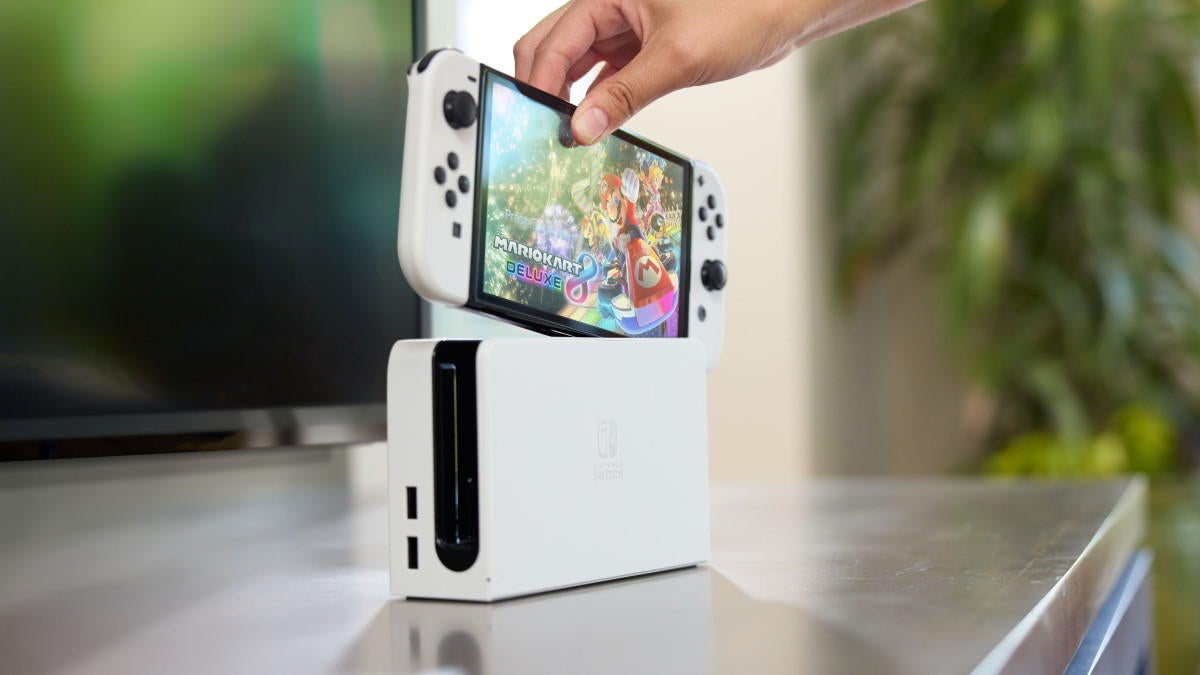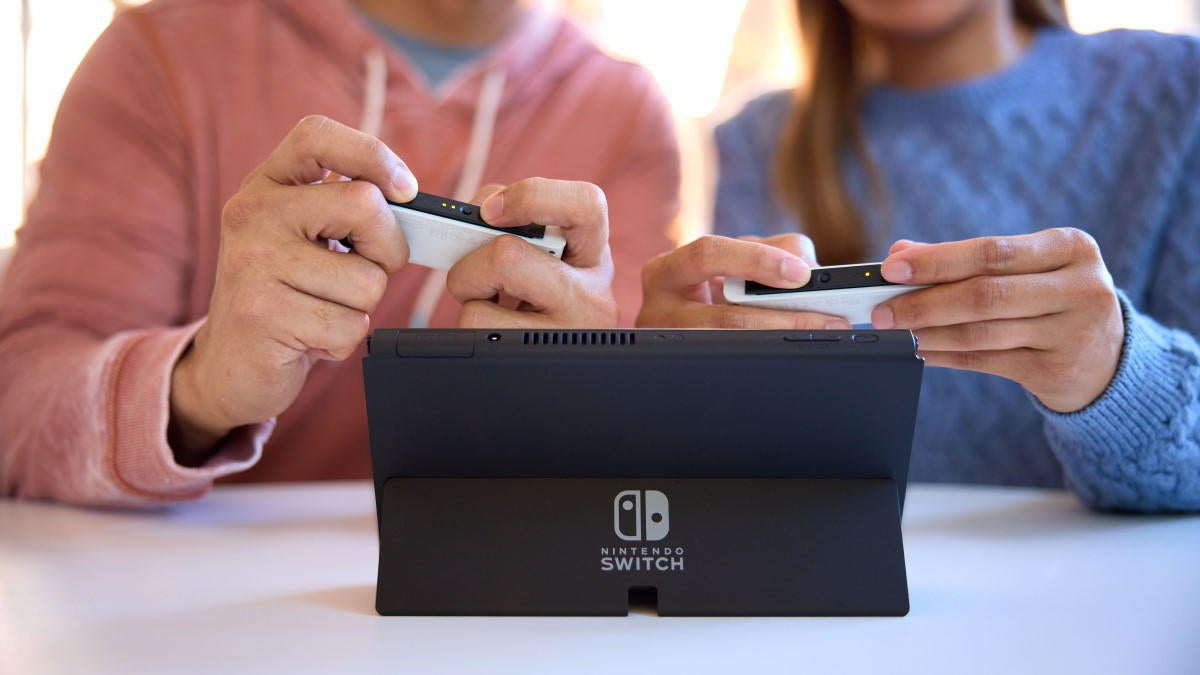The Nintendo Switch OLED model is a lovely device that, despite all its improvements, is hard to recommend to anyone that already has a regular Nintendo Switch or Nintendo Switch Lite. If you do already have and regularly use either of those, the OLED model is an improvement, certainly, but an incremental one more than anything else. Is there a difference between the OLED and the earlier Nintendo Switch consoles? Yes, absolutely. Is that difference significant enough to warrant spending hundreds of dollars — specifically, $349.99 — to own a new version of a console you already have? Probably not.
Functionally, this is the same Nintendo Switch that launched back in 2017. It plays all of the same video games with the same interface and controllers. There are upgraded bits, but if you’re just looking for something that will play first-party Nintendo Switch titles, there are cheaper options out there.
The most obvious difference with the OLED model is in the admittedly clunky name: the OLED screen. It’s a stark improvement over the previous screens on Nintendo Switch consoles, both bigger and brighter, and completely irrelevant if you’re the kind of person that just drops the thing into its dock to play on a television. After years with my previous launch model Nintendo Switch and a couple of weeks with the OLED, there’s no discernible, functional difference when docked.

But that all changes when you’re playing the thing as a handheld. The OLED’s screen is brighter and the colors are more vibrant. In general, it’s just easier to use as a better screen improves the entire experience across the board, and it helps that it’s actually bigger in terms of overall size than on the other Nintendo Switch models. While it’s only a slightly bigger total size in terms of length, the screen itself is 7 inches compared to the 6.2-inch LCD screen on the base model. It makes for a pretty stark comparison if you have the original to directly compare it to, and an even bigger difference compared to the smaller, cheaper Nintendo Switch Lite.
One of the other major changes with the Nintendo Switch OLED model includes a significantly redesigned dock. The OLED dock, as compared to the original, has the Nintendo Switch sit slightly deeper into its groove, for one, and the back cover actually pops off rather than opening and closing with a hinge. The OLED dock also boasts a LAN port, dropping one of the USB ports from the back of the model, and a sleek semicircle opening on the back cover to pass cables through.
But beyond the screen, it’s actually the new stand that is most appealing about the OLED model. Rather than the flimsy kickstand of the original Nintendo Switch, the OLED model opts instead for a full-length stand across the entire lower half of the console that is easy to open but holds the weight of the console well. One of the constant references in promotional ads for the original Nintendo Switch launch was the promise to drop your Switch on a table to play with a bunch of friends at, say, the park, but the reality was that the kickstand never could seem to effectively hold the thing up, and even if it did, it was only ever at the one angle.

The new stand solves all of the problems of the old. It’s wide enough that I’ve never experienced it falling over or being finicky about how it is placed, and the way it opens up and supports itself allows for a variety of different angles with no problem whatsoever. I’d replaced the base model Nintendo Switch’s kickstand with a third-party one that never functioned correctly but was still better than the original, and the OLED’s stand is a huge improvement over that even. As before, the microSD slot sits on the bottom left, though it’s been slightly redesigned to go in horizontally.
A number of the buttons and accents on the OLED model have received a facelift as well, though it’s difficult to say whether they are improvements or simply different. The power and volume buttons on the top have been reshaped slightly with the power button specifically taking on more of an oval shape than a circle like on the previous models, and the vents also have a different design. Sadly, the Joy-Con controllers appear to be the same as before, which is to say prone to drifting. I’ve not experienced any of that myself, but Nintendo previously came right out and confirmed that there was no significant update to them.
The Nintendo Switch OLED model is a perfectly fine example of an incremental upgrade. It’s better than what came before, but not so significantly better as to make it an immediate purchase for those folks that already have one of the previous models. And if people are looking to mostly play a Nintendo Switch docked and hooked into a television, the base model is $50 cheaper and certainly worth looking into. But if they’re looking to play largely as a handheld or simply dipping their toe into the latest generation of Nintendo consoles for the first time, there’s technically no better version than this one.
A review unit was provided by Nintendo at launch for the purpose of this review.


